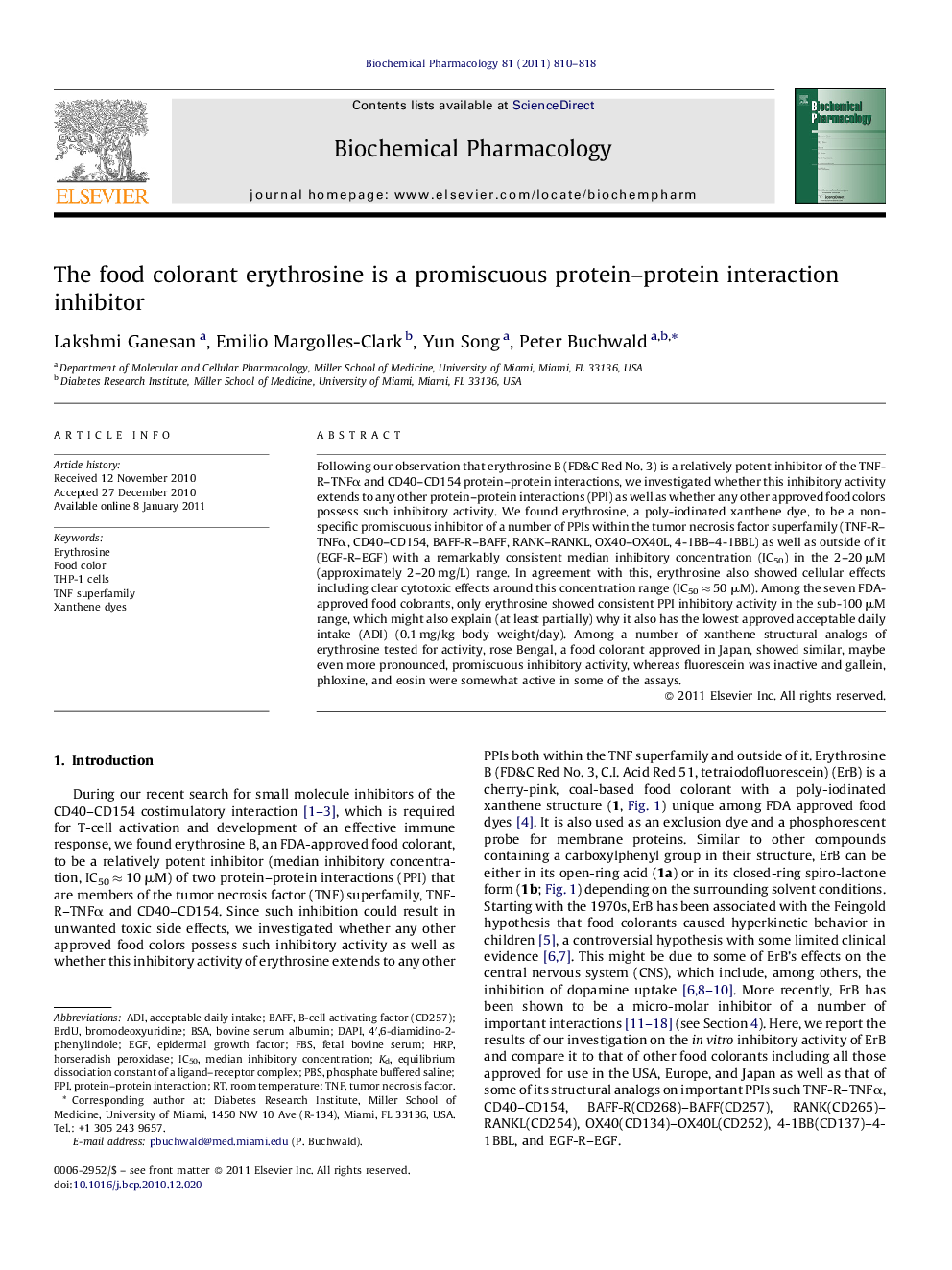| Article ID | Journal | Published Year | Pages | File Type |
|---|---|---|---|---|
| 5823983 | Biochemical Pharmacology | 2011 | 9 Pages |
Abstract
Following our observation that erythrosine B (FD&C Red No. 3) is a relatively potent inhibitor of the TNF-R-TNFα and CD40-CD154 protein-protein interactions, we investigated whether this inhibitory activity extends to any other protein-protein interactions (PPI) as well as whether any other approved food colors possess such inhibitory activity. We found erythrosine, a poly-iodinated xanthene dye, to be a non-specific promiscuous inhibitor of a number of PPIs within the tumor necrosis factor superfamily (TNF-R-TNFα, CD40-CD154, BAFF-R-BAFF, RANK-RANKL, OX40-OX40L, 4-1BB-4-1BBL) as well as outside of it (EGF-R-EGF) with a remarkably consistent median inhibitory concentration (IC50) in the 2-20 μM (approximately 2-20 mg/L) range. In agreement with this, erythrosine also showed cellular effects including clear cytotoxic effects around this concentration range (IC50 â 50 μM). Among the seven FDA-approved food colorants, only erythrosine showed consistent PPI inhibitory activity in the sub-100 μM range, which might also explain (at least partially) why it also has the lowest approved acceptable daily intake (ADI) (0.1 mg/kg body weight/day). Among a number of xanthene structural analogs of erythrosine tested for activity, rose Bengal, a food colorant approved in Japan, showed similar, maybe even more pronounced, promiscuous inhibitory activity, whereas fluorescein was inactive and gallein, phloxine, and eosin were somewhat active in some of the assays.
Keywords
EGFDAPIHRPPPIIC50FBSTNFPBS4′,6-diamidino-2-phenylindoleBSAADIbovine serum albuminErythrosineBAFFBrdUbromodeoxyuridineProtein–protein interactionTNF superfamilyAcceptable daily intakeRoom temperatureFood colorXanthene dyesfetal bovine serumTHP-1 cellsepidermal growth factormedian inhibitory concentrationtumor necrosis factorPhosphate buffered salineHorseradish peroxidase
Related Topics
Health Sciences
Pharmacology, Toxicology and Pharmaceutical Science
Pharmacology
Authors
Lakshmi Ganesan, Emilio Margolles-Clark, Yun Song, Peter Buchwald,
